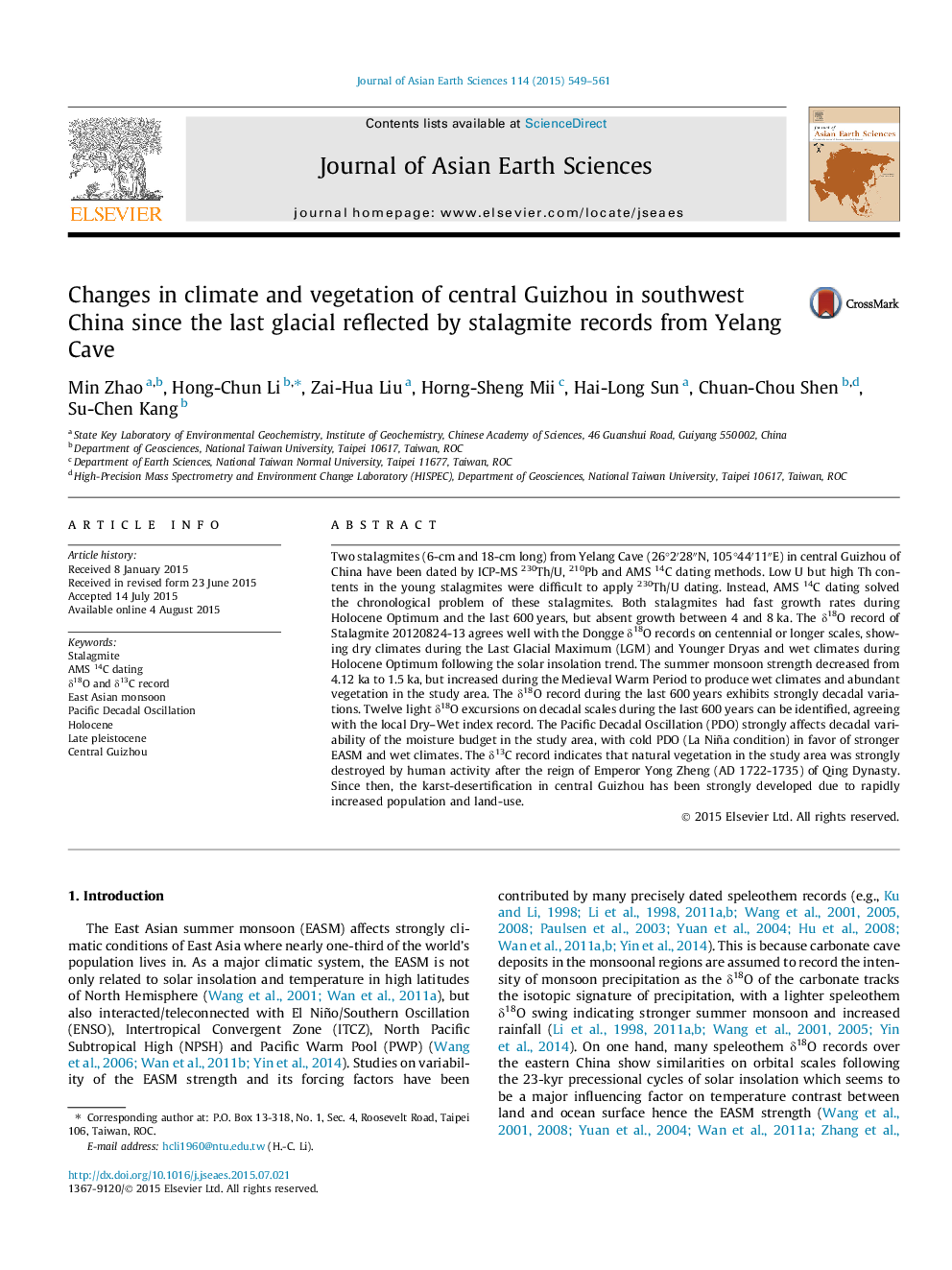| کد مقاله | کد نشریه | سال انتشار | مقاله انگلیسی | نسخه تمام متن |
|---|---|---|---|---|
| 4730161 | 1356739 | 2015 | 13 صفحه PDF | دانلود رایگان |
• AMS 14C dating is suitable to date young stalagmites with low U and high Th.
• Two stalagmites recorded changes in monsoonal climate and vegetation during the past 50 Ka.
• Wet climates and better vegetation during early Holocene and Medieval Warm Period.
• Solar insolation strongly affects the Asian monsoon strength shown by δ18O records.
• Increased monsoonal rainfall in Guizhou under cold PDO and La Niña-like condition.
Two stalagmites (6-cm and 18-cm long) from Yelang Cave (26°2′28″N, 105°44′11″E) in central Guizhou of China have been dated by ICP-MS 230Th/U, 210Pb and AMS 14C dating methods. Low U but high Th contents in the young stalagmites were difficult to apply 230Th/U dating. Instead, AMS 14C dating solved the chronological problem of these stalagmites. Both stalagmites had fast growth rates during Holocene Optimum and the last 600 years, but absent growth between 4 and 8 ka. The δ18O record of Stalagmite 20120824-13 agrees well with the Dongge δ18O records on centennial or longer scales, showing dry climates during the Last Glacial Maximum (LGM) and Younger Dryas and wet climates during Holocene Optimum following the solar insolation trend. The summer monsoon strength decreased from 4.12 ka to 1.5 ka, but increased during the Medieval Warm Period to produce wet climates and abundant vegetation in the study area. The δ18O record during the last 600 years exhibits strongly decadal variations. Twelve light δ18O excursions on decadal scales during the last 600 years can be identified, agreeing with the local Dry–Wet index record. The Pacific Decadal Oscillation (PDO) strongly affects decadal variability of the moisture budget in the study area, with cold PDO (La Niña condition) in favor of stronger EASM and wet climates. The δ13C record indicates that natural vegetation in the study area was strongly destroyed by human activity after the reign of Emperor Yong Zheng (AD 1722-1735) of Qing Dynasty. Since then, the karst-desertification in central Guizhou has been strongly developed due to rapidly increased population and land-use.
Journal: Journal of Asian Earth Sciences - Volume 114, Part 3, 15 December 2015, Pages 549–561
